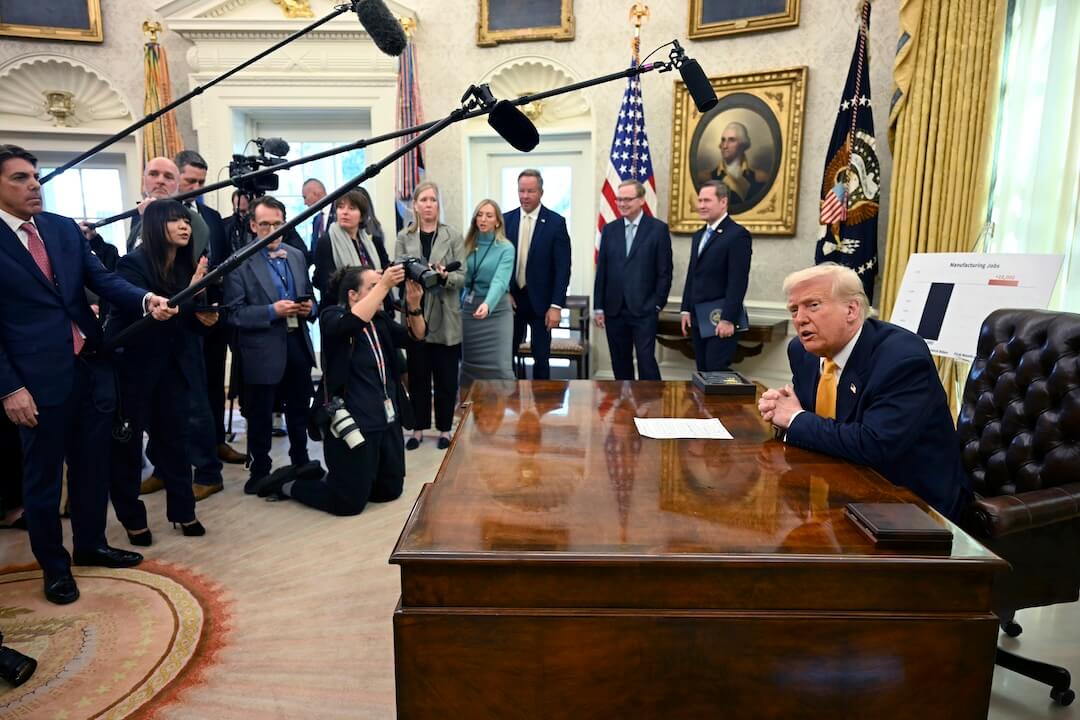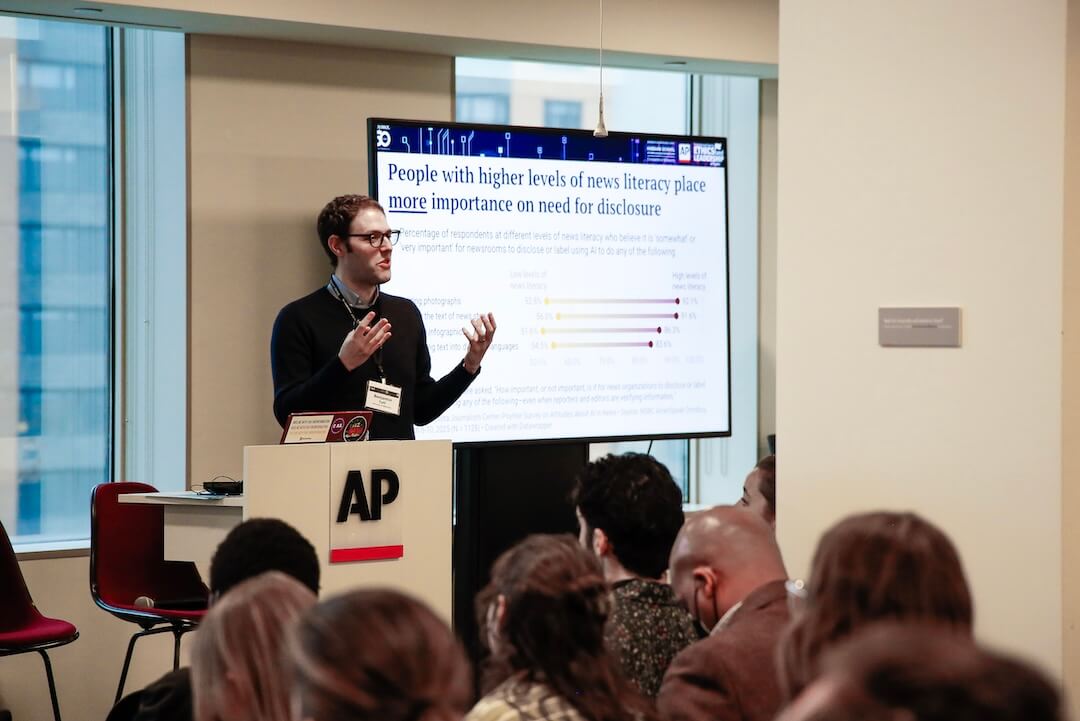The spread of misinformation has changed the way that social media users interact with news.
A study published in Science Advances in January found that older people are more likely to share fake news stories. A Gallup and Knight Foundation survey from last year suggested that most Americans want technology companies to do more to fight misinformation. Other researchers have found that fake news is making college students trust all news less.
But how has online fakery affected journalists?
In a new study conducted by the Institute for the Future, a California-based nonprofit think tank, researchers found more than 80% of journalists admitted to falling for false information online. The data was based on a survey of 1,018 journalists at regional and national publications in the United States.
Perhaps more concerning: Only 14.9% of journalists surveyed said they had been trained on how to best report on misinformation.
NEWSLETTER: Sign up for our weekly newsletter about fact-checking and misinformation.
“There’s so much stuff on social media about current events and figuring out whether or not something is true or false … (it) is a serious challenge,” said Samuel Woolley, director of the Digital Intelligence Lab at the Institute for the Future, in a phone interview. “Journalists that we talked to were super open with the fact that this was a daily stress in their life.”
Among the reasons that journalists said they were concerned about misinformation included the thinning of reporting staffs at their respective organizations and the high potential for them to be attacked by malicious actors on social media. For example, users on fringe platforms like 4chan regularly try to get the media to cover stories that amplify bogus or racist narratives.
At the same time, journalists in the study, which was exclusively sent to Poynter, disagreed on how misinformation should be covered by the media.
According to the survey, which was supplemented with 22 interviews with reporters at “top national publications” in the United States and the United Kingdom from July to November 2018, more than half of journalists said it could be harmful to report on misinformation at all.
“One of the things that surprised me, in particular, was this contentious issue of reporting on false information,” Woolley said. “That one was kind of interesting to me because I know it’s been a very divisive area within journalism itself.”
The tension in those findings echoes what Syracuse University assistant professor Whitney Phillips wrote in a report last year titled “The Oxygen of Amplification.”
In it, she detailed some common mistakes that reporters make when reporting on misinformation, such as repeating falsehoods without context and amplifying hoaxes that haven’t already found a large audience online. Phillips told Poynter in a podcast in December that those problems arose essentially because journalists were being good reporters and trying not to editorialize their coverage.
(Mis)informed podcast: What’s the line between debunking conspiracies and amplifying them?
But Phillips found that, by not contextualizing misinformation, reporters can inadvertently amplify false information. And that could worsen online harassment campaigns against journalists since many misinformers’ goal is to influence the media. The Digital Intelligence Lab’s survey found 27% of journalists said they have been harassed online and 43% said they have colleagues who had.
The survey also echoes findings from a 2017 American Press Institute report, which concluded that most U.S. newsrooms were unprepared to deal with online misinformation. API found that most of the 59 outlets it surveyed were still using social media mostly just to share links to their content.
So how can newsrooms improve their verification skills online to both arm reporters against misinformation and prevent the spread of bogus narratives online? Woolley said the survey provides its own potential solutions.
“One of the crucial things is that we didn’t set out to do this work in any way shape or form to put journalists down,” he said. “We wanted to do something where we could find where the weak spots were so we could push news organizations in this regard.”
According to the survey, 55% of journalists said they wanted training on how to report on false information and 62% said they wanted guidelines on when and how they should publish stories about it. Another 50% said they wanted training on tools to help them detect bots and other misinformation tools on social media.
Woolley said it’s on newsrooms to start looking into those kinds of training. But for media outlets that don’t have the resources, civil society organizations should step in and be more aggressive about offering resources for journalists who are unsure of how to cover false information.
And all journalists should be involved in that conversation, he said.
“I think that the journalists that said they don’t think this is a problem need to reconsider. I think all reporters should be thinking about his issue,” Woolley said. “You’re probably a very likely target (of misinformation).”








